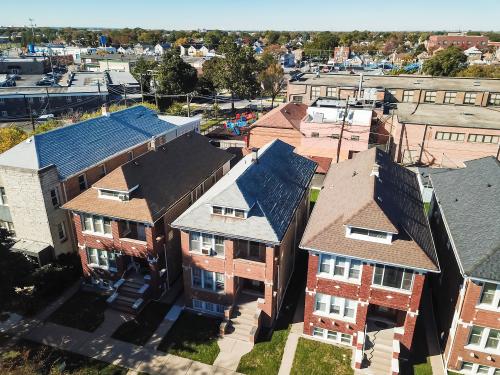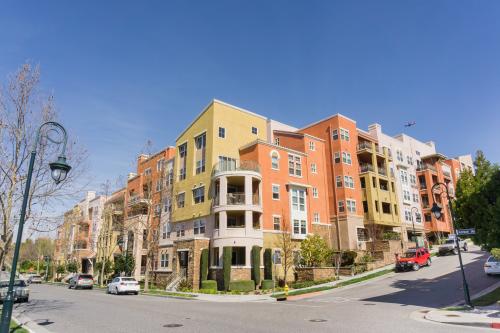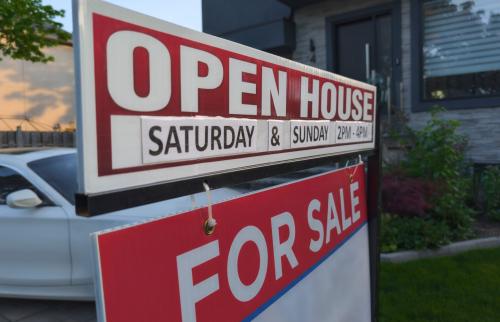The 1970s sparked some cultural trends that have since fallen out of favor, such as disco and platform shoes. Among housing economists, the 1970s are infamous as the decade that a smattering of U.S. cities adopted or expanded rent regulations. Since then, rent regulation has been mostly a footnote in U.S. housing policy. But over the past year, the issue has attracted renewed interest. California’s voters defeated a popular referendum to expand rent regulations last November, but the state legislature is currently considering a similar measure. In March, Oregon became the first state to adopt a state-wide “anti-rent gouging” policy. And the New York state legislature recently passed a sweeping overhaul of the state’s rent regulations—which is now being challenged in federal court.
The primary goal of rent regulation is to create or preserve apartments available at below-market rents without an explicit subsidy from the government. Similar to inclusionary zoning, rent regulations shift the burden for below-market housing onto private landlords. Two assumptions about local housing markets underlie the argument for rent regulation. First, landlords are earning “excess” profits that should be curtailed. Second, household incomes are not keeping pace with increases in housing costs. In this piece, I explore the logic behind these two arguments and discuss some limitations on the effectiveness of rent regulation.
Landlords can’t earn “excess” profits unless there are barriers to competition.
In any housing market, landlords can only charge what the market will bear. Even in places like Manhattan or San Francisco, there are limits to how many households will pay $3,000 for a studio apartment. If a landlord tries to raise rents by 30%, and tenants can find comparable apartments elsewhere at lower rents, the rent-gouging landlord will end up with vacant apartments. Through this process, excess profits will be competed away as long as barriers to competition are low. Landlords’ ability to increase rents and earn excess profits over the long run depends on whether the supply of new apartments is keeping up with demand.
Because building new housing takes time, supply and demand can be out of balance over a short term, leading to temporary spikes in rents. During World War II, rapid population increases in cities contributing to wartime production caused rents to rise. Yet little new housing could be built, because materials and labor were prioritized for wartime production. Thus the first generation of rent controls were adopted to prevent price gouging. Current parallels include small towns in North Dakota or West Texas where housing demand suddenly increased due to fuel extraction. In such instances, there could be arguments to impose temporary caps on rent increases that would sunset at a specific future date–with the caveat that once adopted, rent regulations are politically difficult to remove.
However, most of the cities and states currently debating expansions of rent regulation are places with high barriers to entry that have consistently failed to build enough housing to meet population and job growth. New York City, most of coastal California, and the Washington, D.C. metro all have strict land use regulations and complex development processes that limit the supply of new housing, enabling existing landlords to charge higher rents. The most effective long-term solution is to reduce barriers to development and build more housing, more quickly and cheaply.
Rent control is a blunt instrument to address income inequality and declining federal housing support.
Rent regulations are one way to allow households whose incomes have not kept pace with inflation to remain in their current apartments and neighborhoods. Proponents of rent control argue this is particularly valuable for seniors on fixed pensions who have lived in their communities for many years. More broadly, economic gains over the past decade have not been evenly distributed across workers. Income gaps have widened between households with and without college degrees. Black households have higher unemployment rates and lower income and wealth than their white counterparts. These economic gaps affect differential access to housing, especially in high-cost metros– but they are fundamentally an outcome of labor markets, not housing markets.
These economic gaps affect differential access to housing, especially in high-cost metros– but they are fundamentally an outcome of labor markets, not housing markets.
The growing popularity of both rent control and inclusionary zoning reflects in part the decline of federal support for housing assistance. Policymakers have a variety of tools to help poor households pay the rent, including supplementing incomes through the earned income tax credit (EITC) and targeted housing subsidies such as vouchers. These programs are typically funded by federal government, to avoid the flypaper effect (inducing poor people to move to local jurisdictions with more generous benefits). But over the past several decades, the share of eligible households receiving federal housing assistance has declined. Cities are left to face the consequences: housing instability and homelessness take a toll on local resources.
Which would you prefer, policy complexity or distorted incentives?
Modern rent regulation policies bear little resemblance to the highly simplified model often used in Econ 101 classes. That is, cities do not set hard caps on the rent that can be charged for a two-bedroom apartment, for example, and few apply to all rental housing units across a city. Current policies set limits on the size of rent increases that landlords can charge, that is, regulate rent changes rather than levels. Beyond this basic feature, rent regulations vary considerably in structure across cities and states.
Broadly speaking, rent regulation laws vary in the types of homes or landlords that are initially subject to regulation, whether and how regulations can be removed, the size and process for setting rent increases, and other tenant protections. For instance, New York City’s regulations apply to buildings with six or more apartments, while Los Angeles exempts only single-family homes. San Jose, Calif. caps annual rent increases at 5%, half the maximum increase allowed in Washington, D.C. Programs are split on whether apartments can be “decontrolled” when the current tenant moves out or rent rises above a set level.
The complexity of so-called “second generation” rent regulation policies is not accidental: each provision is intended to offset unintended negative consequences that a simple hard rent cap might create. Rent controls applied to all housing units would be a serious disincentive to new construction.
The complexity of so-called “second generation” rent regulation policies is not accidental: each provision is intended to offset unintended negative consequences that a simple hard rent cap might create. Rent controls applied to all housing units would be a serious disincentive to new construction. Therefore nearly all policies apply to existing buildings of specified age, while exempting new buildings. A chief concern about limiting rent increases is that it encourages landlords to skimp on maintenance: why replace aging appliances or install energy-efficient windows if the costs cannot be recovered through higher rents? To mitigate this concern, most rent regulation laws have some provision that allows landlords to pass along direct costs incurred through capital improvements to their tenants.
Policies that try to foresee and mitigate unintended consequences create fewer distortions in housing markets, but the degree of complexity built into these programs creates other costs. Landlords may not know all the provisions and requirements, and therefore are more likely to inadvertently break the law–especially small-scale landlords with limited staff capacity. Tenants may be unaware of their rights, and therefore less likely to report violations.
Complex policies also require greater resources from local or state governments in charge of administering them. Monitoring which buildings and apartments are subject to rent regulation requires maintaining a comprehensive inventory–which changes frequently as units are “decontrolled”. If landlords must require permission for larger-than-usual rent increases to cover capital improvements, city staff need to review applications and grant allowances. While rent regulation creates below-market units without direct ongoing subsidy from the local government, implementing and enforcing these policies does require public resources–a hidden and unmeasured subsidy.
Further, no rent regulation will be able to anticipate and forestall all negative impacts. Even seemingly benign components may backfire. Provisions intended to protect tenants from evictions may lead landlords to impose more restrictive initial screening, which often hurts the most vulnerable population groups.
Better housing policies are politically hard. We should keep trying.
The renewed popularity of rent regulations may be inevitable, given the political and fiscal pressures faced by many cities in trying to cope with rising housing costs. State and local governments contemplating rent regulation should keep the following issues in mind:
- Regulations that take a larger bite out of landlord profits create stronger incentives to find loopholes and evade regulation. Oregon’s statewide anti-rent-gouging law, which allows rent increases of CPI plus 7%, will likely create fewer distortions than laws with smaller allowed increases.
- The “hidden subsidy” required to administer and enforce rent regulations should be explicitly measured, so that public agencies understand the true costs of these programs.
- When possible, cities and states should pair rent regulation and tenant protection efforts with policies that lower barriers to new development. State legislatures in Oregon and California have introduced both pro-supply bills and rent regulation bills, but packaged as separate legislation. This increases the risk that only the rent regulations are adopted, without addressing barriers to supply.
Policymakers should be applauded for their intent to ease housing cost burdens for low- and moderate income families. Effective long-term solutions must address the underlying problems–barriers to supply and persistently low incomes–not merely treat the symptom.
The Brookings Institution is committed to quality, independence, and impact.
We are supported by a diverse array of funders. In line with our values and policies, each Brookings publication represents the sole views of its author(s).







